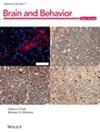Citronellal Exerts Sedative-Like Effects and Augments Diazepam's Action in Swiss Mice, Possibly Through the GABAergic Pathway
Abstract
Introduction
Citronellal (CTL), a monoterpenoid, exhibits notable neurological activity, including anxiolytic, and anticonvulsant effects, primarily through GABAergic pathways. Our current study aimed to explore CTL's sedative potential using in vitro, in vivo, and in silico approaches through the GABAergic pathway.
Methods
The in vitro GABAergic activity of CTL was assessed via colorimetric assay, while acute toxicity was evaluated in Swiss mice per OECD guidelines with doses up to 2000 mg/kg to establish safety margins. Sedative effects were assessed in Swiss mice using thiopental sodium (TS, 40 mg/kg)-induced sleep protocols. CTL was administered at 62.5, 125, and 250 mg/kg doses, alone or combined with diazepam (DZP, 2 mg/kg) or flumazenil (FLU, 0.1 mg/kg). The in silico studies were also performed with GABAA receptors (α1 and β2 subunits) to investigate the possible molecular mechanism.
Results
The results demonstrated that in vitro, CTL exhibited significantly concentration-dependent GABAergic activity. Acute toxicity tests indicated a high safety margin (no behavioral or physiological abnormalities at 2000 mg/kg dose). Additionally, CTL significantly (p < 0.05) and dose-dependently reduced the latency and augmented sleep duration in animals, compared to the control group. It also significantly (p < 0.05) decreased the latency and increased the duration of sleep with DZP-2 while reducing this parameter with FLU-0.1. In in silico studies, CTL exhibited binding affinities (BAs) with the GABAA receptor (α1 and β2 subunits) of –5.6 kcal/mol.
Conclusion
CTL demonstrated potent sedative effects in vitro and in vivo, with a strong safety profile and interaction with the GABAA receptor (α1 and β2 subunits).


 求助内容:
求助内容: 应助结果提醒方式:
应助结果提醒方式:


